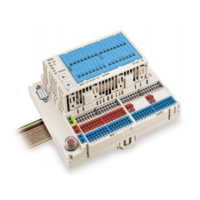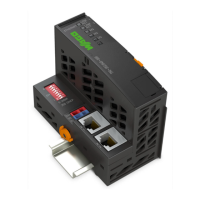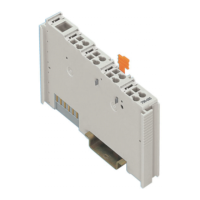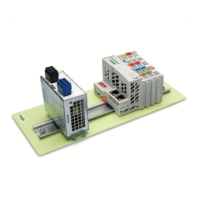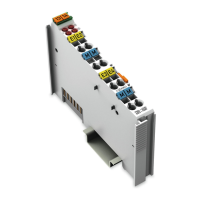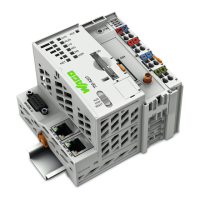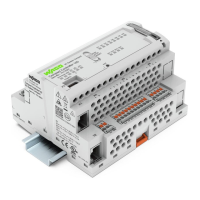WAGO-I/O-SYSTEM 750 MODBUS/TCP 91
758-874/000-131 WAGO-I/O-IPC-C6
Manual
Version 1.0.0
Pos: 46.1 /Serie 758 ( Funk, IPC und PFC)/Feldbusko mmunikation/Feldb uskommunikation 758-8 7x MODBUS allgemein @ 10\mod _1312456038415_21. doc @ 75904 @ 12233 @ 1
10 MODBUS/TCP
The modular concept of the 750 Series makes it possible to connect up to 250 (via
internal data bus extension) I/O modules to the I/O-IPC. This variable
construction and the large number of different I/O modules prevent a static
assignment of input and output data to fixed MODBUS addresses, however. The
only exceptions are the "digital" MODBUS services. For these, the MODBUS
address is identical to the channel number; i.e., the 47th digital input can always
be found at MODBUS address "46".
By adding or removing I/O modules, the structure of the process images is
changed which also changes the MODBUS addresses of individual I/O module
channels.
MODBUS communication is performed via service calls, the MODBUS master
(client) sending a request telegram to port 502 of the MODBUS slave (server).
The MODBUS slave returns the result of the service call in a response telegram to
the MODBUS master.
The most important elements of a MODBUS telegram are:
Table 42: Elements of a MODBUS telegram
Term Description
UnitID Identification of which device is to be activated (<FF)
FunctionCode (FC) Service identification: read or write operation in bits or words
Address Operation start address
Count Number of bits or words depending on the service
[Data] Process data
The service identification or "FunctionCode" (FC) first determines whether the
service is a read or write operation. It also determines the basic data type to which
the operation is to be applied. Therefore, the meaning of the parameters "Address"
and "Count" is also dependent on the function code. Thus "address :=3" can stand
for a bit or a word in the input or output process image.
The MODBUS/TCP protocol is largely based on the following basic data types:
Table 43: Basic data types of MODBUS
Data type: Length Description
Discrete Inputs 1 bits Digital Inputs
Coils 1 bits Digital outputs:
Input Register 16 bits Analog input data
Holding Register 16 bits Analog output data
One or more "FunctionCodes" are defined for each basic data type.

